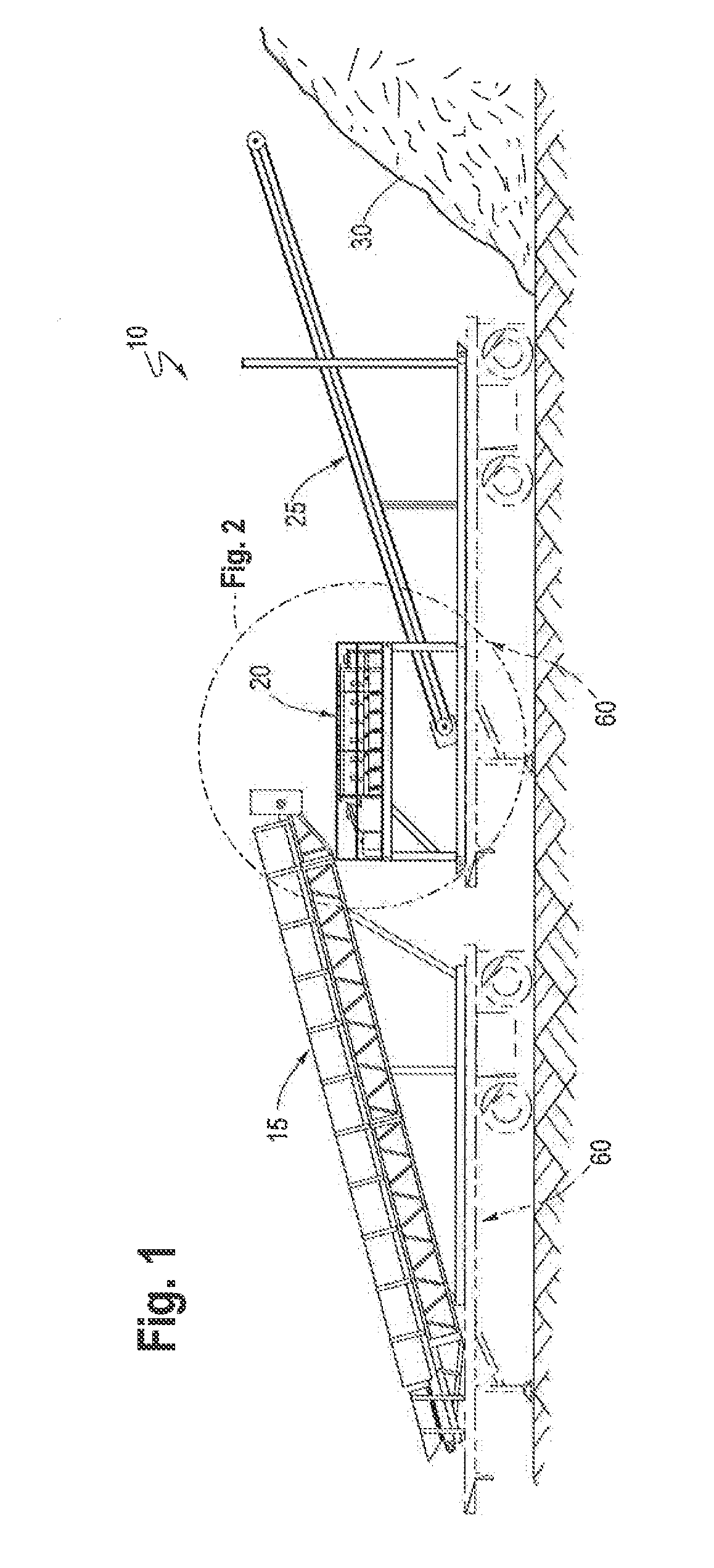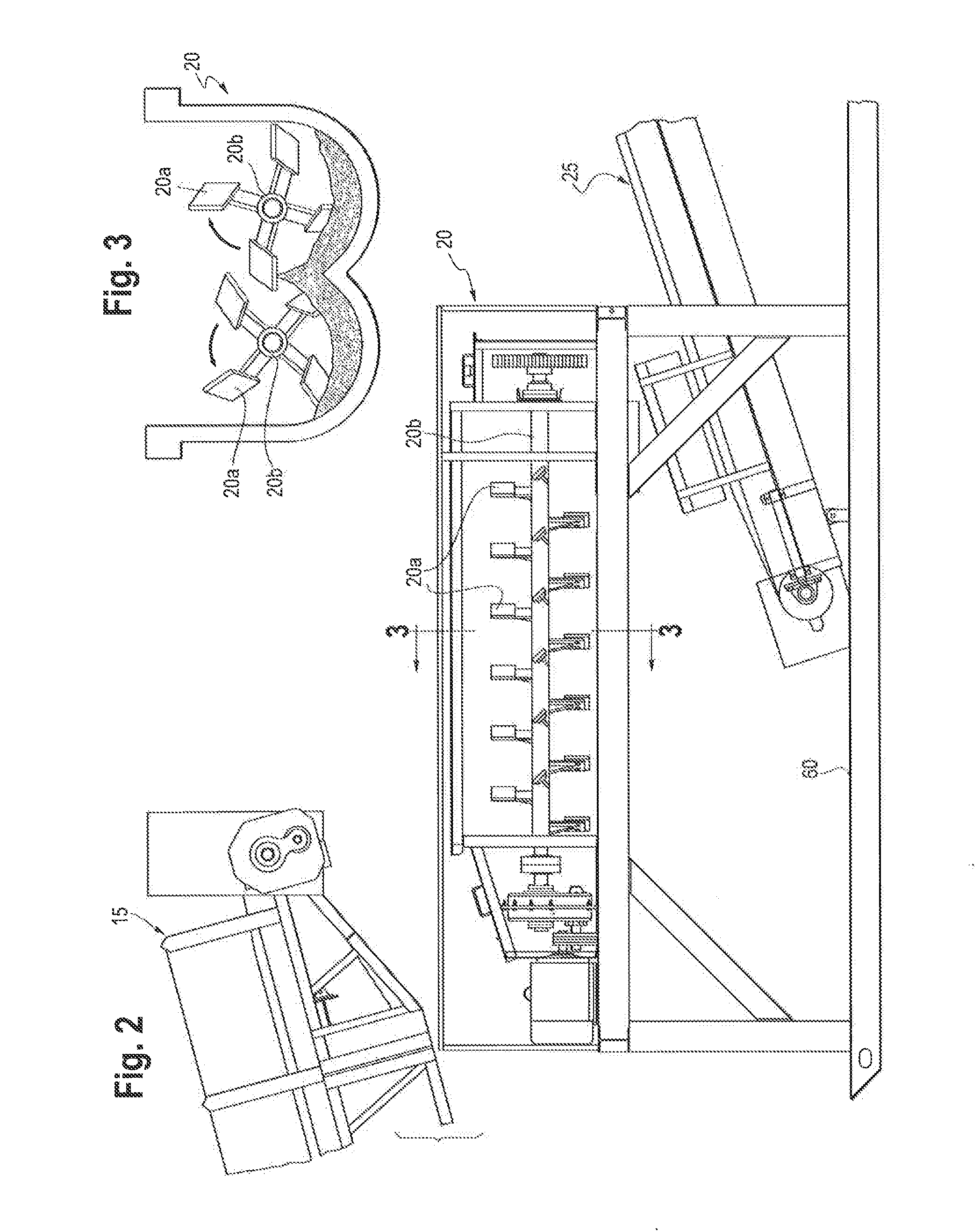Portable system and method for processing waste to be placed in landfill
a landfill and portable technology, applied in grain treatment, transportation and packaging, nuclear engineering, etc., can solve the problems of large waste solidification area, time-consuming and inefficient process, and large fixed system to achieve sufficient waste solidification in the past, so as to reduce fugitive dust and avoid any substantial delay. , the effect of reducing the amount of dus
- Summary
- Abstract
- Description
- Claims
- Application Information
AI Technical Summary
Benefits of technology
Problems solved by technology
Method used
Image
Examples
Embodiment Construction
[0036]Set forth below is a description of what are believed to be the preferred embodiments and / or best examples of the invention claimed. Future and present alternatives and modifications to this preferred embodiment are contemplated. Any alternatives or modifications which make insubstantial changes in function, in purpose, in structure, or in result are intended to be covered by the claims of this patent.
[0037]Referring now to FIG. 1, a preferred embodiment of the portable system of the present invention for solidifying sludge waste and transporting it either to haul trucks for depositing to an active cell of a landfill, or for direct discharge into the active cell, is shown and generally referred to by reference numeral 10. With system 10, dry solids may be truck-fed onto an intake conveyor 15, and discharged into pugmill 20, such as a double-paddle mixing pugmill having blades 20a set on multiple rotor shafts 20b. Simultaneously, a liquid pump (not shown), such as a 3-inch or 4...
PUM
| Property | Measurement | Unit |
|---|---|---|
| diameter | aaaaa | aaaaa |
| power | aaaaa | aaaaa |
| frequency | aaaaa | aaaaa |
Abstract
Description
Claims
Application Information
 Login to View More
Login to View More - R&D
- Intellectual Property
- Life Sciences
- Materials
- Tech Scout
- Unparalleled Data Quality
- Higher Quality Content
- 60% Fewer Hallucinations
Browse by: Latest US Patents, China's latest patents, Technical Efficacy Thesaurus, Application Domain, Technology Topic, Popular Technical Reports.
© 2025 PatSnap. All rights reserved.Legal|Privacy policy|Modern Slavery Act Transparency Statement|Sitemap|About US| Contact US: help@patsnap.com



